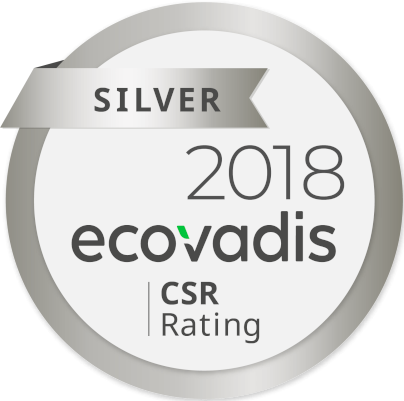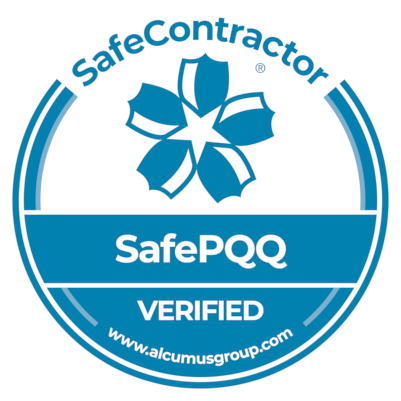Any discharge to a public sewer from a commercial or industrial premises, that is not domestic sewage, is classified as Trade Effluent, and under the Water Industry Act 1991, it is an offence to make this discharge without the consent of the ‘sewerage undertaker’ – usually the local water company.
There are no exceptions for low volumes or low levels of contamination. So any volume of discharge requires a Consent. To obtain a Consent, an application must be made to the local water company giving details of the likely flow rate, the chemicals that could be present in the effluent at any time and a diagram showing the entry point to the public sewer.
The consent will usually contain Conditions that must be met; these will depend on the nature and volume of the discharge and the capability of the sewage treatment works involved. The Conditions are set so that the discharge cannot harm the sewerage system, the sewage treatment works, employees or public and the environment, and are written into Consents on an individual basis. The Conditions usually include prohibitions on the discharge of certain materials such as oils, fats and flammable solvents, and also set limits for parameters such as suspended solids, pH, Chemical Oxygen Demand and flowrate. Other parameters such as heavy metals and pesticides may be limited depending on the nature of the process from which the effluent is generated.
In order to determine compliance with the Conditions, the water company will take regular samples (the frequency depending on the nature and volume of the effluent) for analysis; this also enables calculation of the charge. In certain cases particularly where the flowrate is low, an average concentration of the consented parameters may be determined at the outset in order to determine an ‘agreed strength’ so that regular sampling and analysis is not necessary – the charges being calculated from the volume and the agreed strength. This will be the case for the majority of smaller companies.
Although the water companies levy a charge, determined as described above, to accept and treat trade effluent, this is not necessarily a cost burden. Currently if you do not have a trade effluent discharge consent, then the water company will assume that all the water you use is discharged as domestic sewage; for which you pay a volume charge. Unless you have a high strength effluent, then the cost of effluent discharge
Summary: The Trade Effluent (Prescribed Processes and Substances) Regulations 1989 specify which categories of trade effluent have their discharge to public sewers controlled.
Sewerage undertakers are required, under the regulations, to notify the Environment Agency if they intend to vary existing trade effluent consents.
The Regulations:
The Secretary of State for the Environment and the Secretary of State for Wales, acting jointly in exercise of the powers conferred on them by sections 74 and 185(2) of the Water Act 1989(1), and of all other powers enabling them in that behalf, hereby make the following Regulations:—
.Citation and commencement
1. These Regulations may be cited as the Trade Effluents (Prescribed Processes and Substances) Regulations 1989 and shall come into force on 1st September 1989.
Interpretation
2. In these Regulations –
“the 1989 Act” means the Water Act 1989;
“asbestos” means any of the fibrous silicates, namely, crocidolite, actinolite, anthophyllite, chrysotile, amosite and tremolite; and
“background concentration”, in relation to any substance, means such concentration of the substance as would, but for anything done on the premises in question, be present in the effluent discharged from those premises; and without prejudice to the generality of the foregoing, includes such concentrations of the substance as are present –
(a)in water supplied to the premises;.
(b)in water abstracted for use in the premises; and.
(c)in precipitation onto the site within which the premises are situated..
Trade effluent containing prescribed substances
3. Section 74 of the 1989 Act (control of exercise of trade effluent functions in certain cases) shall apply to trade effluent in which any of the substances listed in Schedule 1 to these Regulations is present in a concentration greater than the background concentration.
Trade effluent derived from prescribed processes
4. Section 74 of the 1989 Act shall apply to trade effluent deriving from a process of a description mentioned in Schedule 2 to these Regulations if either asbestos or chloroform is present in that effluent in a concentration greater than the background concentration.
Variation of existing consents
5.—(1) A sewerage undertaker shall, in the circumstances referred to in paragraph (2), notify the Secretary of State of its proposal to vary, by direction under section 60(1) of the Public Health Act 1961(2), the conditions attached to a consent having effect as if given by the undertaker under the Public Health (Drainage of Trade Premises) Act 1937(3) (consent to the discharge of trade effluent into a public sewer).
(2) The circumstances mentioned in paragraph (1) are that –
(a)the consent has not been reviewed by the Secretary of State in accordance with paragraph 2 of Schedule 9 to the 1989 Act; and.
(b)if the proposed variation were made, the consent would authorise the discharge of effluent containing a concentration of a substance referred to in Schedule 1 to these Regulations in excess of the background concentration..
(3) A notification under paragraph (1) shall be treated as a reference to the Secretary of State under paragraph 1 of the said Schedule 9 of the question whether the relevant operations should be prohibited; and paragraphs 3 and 4 of that Schedule shall have effect accordingly.
(4) Where the undertaker has notified the Secretary of State in accordance with paragraph (1) –
(a)it shall inform the owner or occupier of the trade premises in question of that notification; and.
(b)it shall not vary the consent unless the Secretary of State has given such a notice as is described in paragraph 3(2)(c) of the said Schedule
9..
(5) The requirements imposed on a sewerage undertaker by this
regulation shall be enforceable under section 20 of the 1989 Act by the Secretary of State.
Signed by authority of the Secretary of State
Michael Howard
Minister for Water and Planning,
Department of the Environment
6th July 1989
..Peter Walker
Secretary of State for Wales
6t July 1989
…Regulation 3
SCHEDULE 1
PRESCRIBED SUBSTANCES
Mercury and its compounds
Cadmium and its compounds
gamma-Hexachlorocyclohexane
DDT
Pentachlorophenol
Hexachlorobenzene
Hexachlorobutadiene
Aldrin
Dieldrin
Endrin
Carbon Tetrachloride
Polychlorinated Biphenyls
Dichlorvos
1, 2-Dichloroethane
Trichlorobenzene
Atrazine
Simazine
Tributyltin compounds
Triphenyltin compounds
Trifluralin
Fenitrothion
Azinphos-methyl
Malathion
Endosulfan
Regulation 4
SCHEDULE 2
PRESCRIBED PROCESSES
Description of process
Any process for the production of chlorinated organic chemicals
Any process for the manufacture of paper pulp
Any industrial process in which cooling waters or effluents are chlorinated
Any process for the manufacture of asbestos cement
Any process for the manufacture of asbestos paper or board
Explanatory Note
(This note is not part of the Regulations)
These Regulations specify two categories of trade effluent in respect of which the provisions of the Public Health (Drainage of Trade Premises) Act 1937, Part V of the Public Health Act 1961 and sections 43 to 45 of the Control of Pollution Act 1974 (which impose controls over the discharge of trade effluents into public sewers) are to apply.
The first category is effluent which contains concentrations of the substances listed in Schedule 1 to the Regulations which exceed those that would be present regardless of the activities within the premises from which the effluent is discharged.
The second category consists of effluent produced in the course of a process of a type described in Schedule 2 to the Regulations where that effluent contains concentrations of asbestos or chloroform which exceed those that would be present regardless of the process.
The Regulations also provide that sewerage undertakers must notify the Secretary of State if they propose to vary existing trade effluent discharge consents so as to permit the discharge of effluent containing Schedule 1 substances. In such cases the Secretary of State is to determine in accordance with the procedures specified in paragraphs 3 and 4 of Schedule 9 to the 1989 Act whether the consent may be so varied.
Regulations 3 and 5 give effect to paragraph 2 of Article 3 of Council Directive 76/464/EEC (OJ No. L 129, 18.5.76, p.23) (on pollution caused by certain dangerous substances discharged into the aquatic environment of the Community) by enabling the Secretary of State to control the discharge to public sewers of the substances listed in Schedule 1 up to and including carbon tetrachloride (which are List 1 substances for the purposes of that Directive).
Regulation 4 gives effect to Article 3 of Council Directive 87/217/EEC (OJ No. L 85, 28.3.87, p.40) (on the prevention and reduction of environmental pollution by asbestos) by enabling the Secretary of State to control the discharge to public sewers of asbestos derived from processes for the manufacture of asbestos cement and asbestos paper or board.





